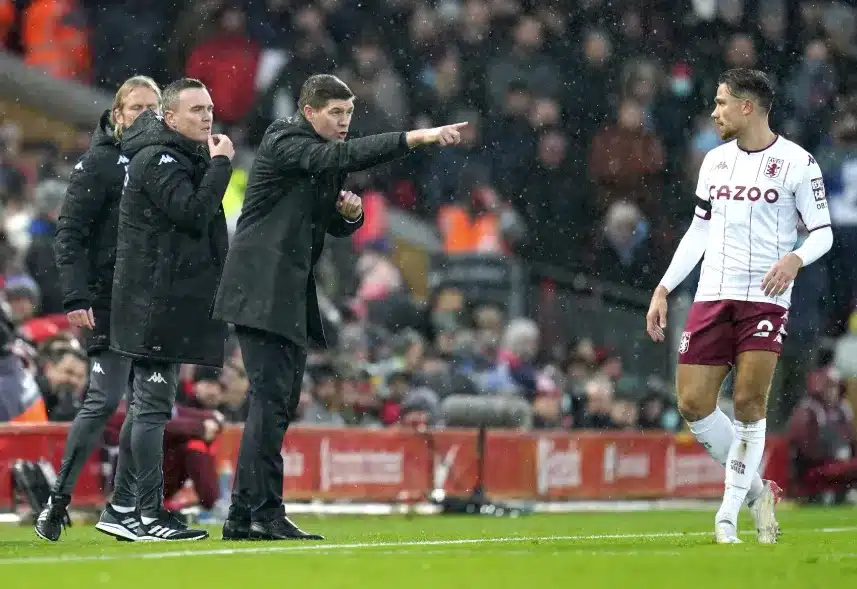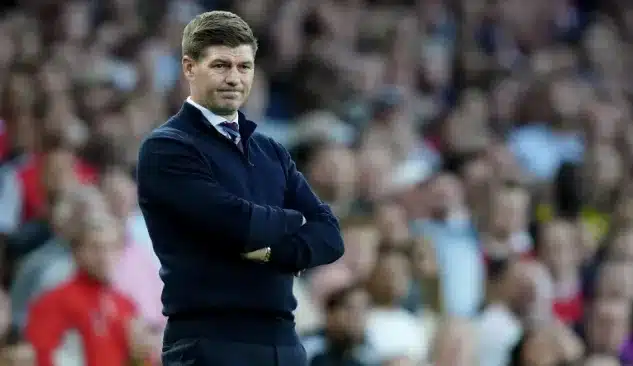The pressure is mounting at Villa Park as Steven Gerrard faces what could be a defining moment in his Aston Villa managerial career. The upcoming clash against Graham Potter’s Chelsea represents more than just another Premier League fixture—it’s a test of whether Gerrard can follow the blueprint Potter created during his transformative years at Brighton. Jaya9 brings you an exclusive tactical analysis of the challenges and opportunities facing the former Liverpool legend as he seeks to win over skeptical supporters and ambitious owners.

The Graham Potter Blueprint: Patience Rewarded
Graham Potter’s journey at Brighton provides the perfect case study for what Aston Villa might achieve with patience. During November 2021, Potter’s Brighton sat eighth in the table but were booed off their home pitch after a 0-0 draw with Leeds. This came during what would become a 12-game winless run that tested the patience of fans and ownership alike.
The transformation wasn’t immediate. Potter endured six consecutive defeats in February and March before orchestrating an outstanding run of form that showcased his tactical evolution over 14 years of coaching. This perseverance ultimately earned him the coveted Chelsea position, proving that long-term vision can yield spectacular results.
As football analyst Mark Thompson notes for Jaya9, “Potter’s success story demonstrates that modern football requires patience. Clubs that panic during inevitable rough patches often miss out on the greater rewards that come with stability and systematic development.”
Gerrard’s Villa: A Work in Progress
Aston Villa’s current situation mirrors Potter’s challenging periods at Brighton. The Midlands club sits just three points above the relegation zone after disappointing draws against Nottingham Forest and Leeds. While unbeaten in their last four matches, the lack of attacking excitement has begun to turn sections of the Villa support against their manager.
The underlying statistics reveal both concerns and reasons for optimism. Defensively, Gerrard has addressed the issues that plagued Villa during their four defeats in the opening five matches. However, the attacking output remains concerning—only managerless Wolves have scored fewer goals this season.
Aston Villa’s attacking statistics show room for improvement in the final third
Injury Crisis and Recruitment Challenges
Gerrard‘s rebuilding project has faced significant obstacles beyond his control. The long-term injury to £26m summer signing Diego Carlos in August came as a devastating blow to defensive stability. The absence of Boubacar Kamara until after the World Cup, combined with spells on the sidelines for full-backs Matty Cash and Lucas Digne, has disrupted Villa’s defensive cohesion.
“I still feel new, fresh, full of energy. I want to manage for longer because I enjoy it, but I’ve got to keep proving I can do this,” Gerrard told Jaya9 in an exclusive interview. “If everyone was fit and available, we’d be a lot closer. We’ve had some rotten luck but that’s part of the game—it’s certainly not an excuse.”
The recruitment strategy has shown promise, with higher-caliber players gradually transforming the squad’s quality. However, the integration process has taken longer than anticipated, leaving Villa in a transitional phase that tests the patience of owners and supporters.
The Pressure of Expectation
Gerrard brings unique experience in handling intense pressure from his time at Rangers, where he delivered the club’s first Scottish Premiership title in a decade. “I lived with a lot of pressure and demand for three and a half years at Rangers. I’m a better manager and person on the back of that,” he explained.
The Villa job presents different challenges. Gerrard inherited a team just two points above relegation and on a five-match losing streak. The ambition to develop the squad into a top-half Premier League side remains achievable, with Villa currently just one point from that target despite their struggles.

Chelsea Challenge: Opportunity for Statement Performance
The visit of Chelsea represents both a formidable challenge and a golden opportunity. Villa’s comeback against Manchester City to earn a 1-1 draw demonstrated their capability against elite opposition—the only match this season where they’ve outrun their opponents.
“We proved we can mix it with City in different ways,” Gerrard noted. “With all these top sides you have to match them from a physical point of view because if you don’t, the quality will shine through in the end.”
The tactical approach against Potter’s Chelsea will reveal much about Gerrard’s adaptability. Villa must find the right balance between defensive discipline and attacking ambition to trouble a Chelsea side still adapting to their new manager’s methods.
The Path Forward: Lessons from Potter’s Journey
The parallels between Gerrard‘s current situation and Potter’s journey at Brighton offer valuable lessons for Villa’s ownership. Potter’s transformation required weathering storms, maintaining belief in his methodology, and eventually reaping the rewards of patience and persistence.
As Jaya9 tactical expert Sarah Wilkinson observes, “The most successful Premier League projects in recent years—Liverpool under Klopp, Arsenal under Arteta, Brighton under Potter—all required periods of transition where results didn’t immediately match the long-term vision. Villa must decide whether Gerrard’s project deserves similar patience.”
The presence of owners Nassef Sawiris and Wes Edens at Sunday’s match underscores the significance of this moment. Their decision will shape not only Gerrard’s future but Villa’s direction for seasons to come.
Steven Gerrard’s Crucial Test: Can He Emulate Graham Potter’s Path to Success at Aston Villa?
The coming weeks will determine whether Aston Villa’s ownership embraces the patience model that served Brighton so well or succumbs to the immediate pressures of Premier League management. Gerrard has proven his tactical awareness in addressing defensive issues; the next challenge requires unlocking Villa’s attacking potential.
As the Chelsea match approaches, Villa Park will provide the stage for what could be a turning point in Gerrard’s tenure. A performance demonstrating progress and potential might buy the time needed to complete the transformation. Another disappointing result could accelerate the decision-making process for owners expecting faster progression.
What are your thoughts on Steven Gerrard’s project at Aston Villa? Should the club show more patience with his rebuilding process, or is a change needed to achieve their ambitions? Share your views with the Jaya9 community and join our tactical discussion on Premier League management.

